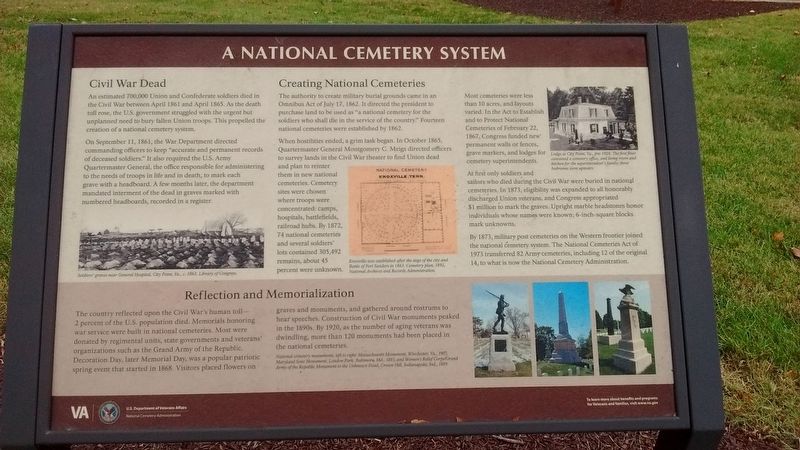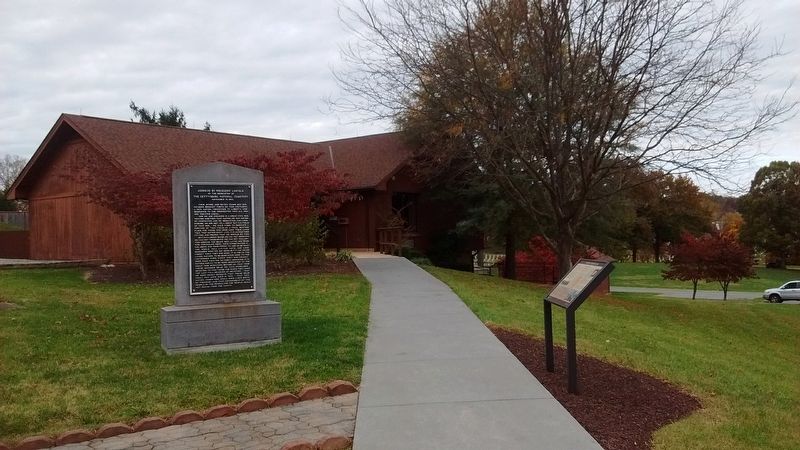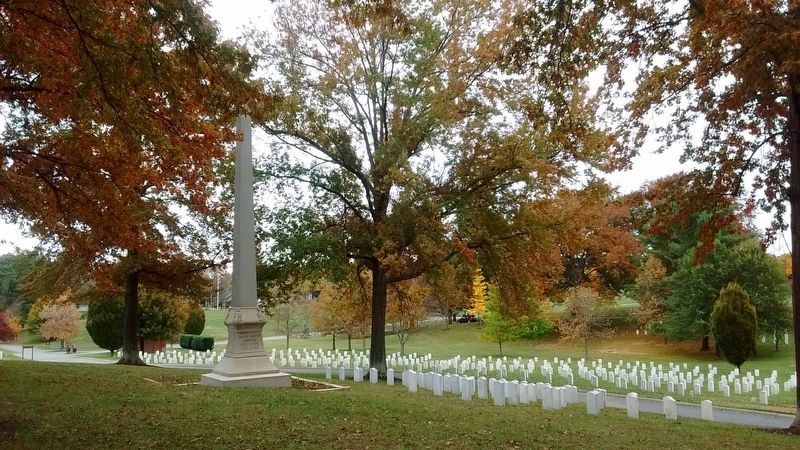A National Cemetery System
An estimated 700,000 Union and Confederate soldiers died in the Civil War between April 1861 and April 1865. As the death toll rose, the U.S. government struggled with the urgent but unplanned need to bury fallen Union troops. This propelled the creation of a national cemetery system.
On September 11, 1861, the War Department directed commanding officers to keep "accurate and permanent records of deceased soldiers." It also required the U.S. Army Quartermaster General, the officer responsible for administering to the needs of troops in life and in death, to mark each grave with a headboard. A few months later, the department mandated interment of the dead in graves marked with numbered headboards, recorded in a register.
Creating National Cemeteries
The authority to create military burial grounds came in an Omnibus Act of July 17, 1862. It directed the president to purchase land to be used as "a national cemetery for the soldiers who shall die in the service of the country." Fourteen national cemeteries were established by 1862.
When hostilities ended, a grim task began. In October 1865, Quartermaster General Montgomery C. Meigs directed officers to survey lands in the Civil War theater to find Union dead and plan to reinter them in new national cemeteries. Cemetery sites were chosen where troops
were concentrated: camps, hospitals, battlefields, railroad hubs. By 1872, 74 national cemeteries and several solders' lots contained 305,492 remains, about 45 percent were unknown.Most cemeteries were less than 10 acres, and layouts varied. In the Act to Establish and to Protect National Cemeteries of February 22, 1867, Congress funded new permanent walls or fences, grave markers, and lodges for cemetery superintendents.
At first only soldiers and sailors who died during the Civil War were buried in national cemeteries. In 1873, eligibility was expanded to all honorably discharged Union veterans, and Congress appropriated $1 million to mark the graves. Upright marble headstones honor individuals whose names were known; 6-inch square blocks mark unknowns.
By 1873, military post cemeteries on the Western frontier joined the national cemetery system. The National Cemeteries Act of 1973 transferred 82 Army cemeteries, including 12 of the original 14, to what is now the National Cemetery Administration.
(sidebar)
Reflection and Memorialization
The country reflected upon the Civil War's human toll - 2 percent of the U.S. population died. Memorials honoring war service were built in national cemeteries. Most were donated by regimental units, state governments and veterans' organizations such as the Grand Army of the Republic. Decoration Day, later Memorial
Erected by U.S. Department of Veterans Affairs - National Cemetery Admnistration.
Topics and series. This historical marker is listed in these topic lists: Cemeteries & Burial Sites • War, US Civil. In addition, it is included in the National Cemeteries series list. A significant historical date for this entry is February 22, 1867.
Location. 36° 18.653′ N, 82° 22.447′ W. Marker is in Johnson City, Tennessee, in Washington County. Marker is on Sunset Drive, on the left when traveling north. Touch for map. Marker is in this post office area: Johnson City TN 37604, United States of America. Touch for directions.
Other nearby markers. At least 8 other markers are within walking distance of this marker. Mountain Home National Cemetery (a few steps from this marker); National Soldiers’ Home (approx. 0.2 miles away); William Nelson Home (approx. 0.3 miles away); Elbert Columbus "E.C." Miller (approx. 0.7 miles away); National Pan-Hellenic Council Plaza (approx. 0.7 miles away); Johnson City (approx. 0.7 miles away); Borchuck Plaza (approx. 0.7 miles away); Desegregation of East Tennessee State College (University) (approx. 0.7 miles away). Touch for a list and map of all markers in Johnson City.
Credits. This page was last revised on November 21, 2018. It was originally submitted on November 18, 2018, by Tom Bosse of Jefferson City, Tennessee. This page has been viewed 216 times since then and 15 times this year. Photos: 1, 2, 3. submitted on November 18, 2018, by Tom Bosse of Jefferson City, Tennessee. • Andrew Ruppenstein was the editor who published this page.


